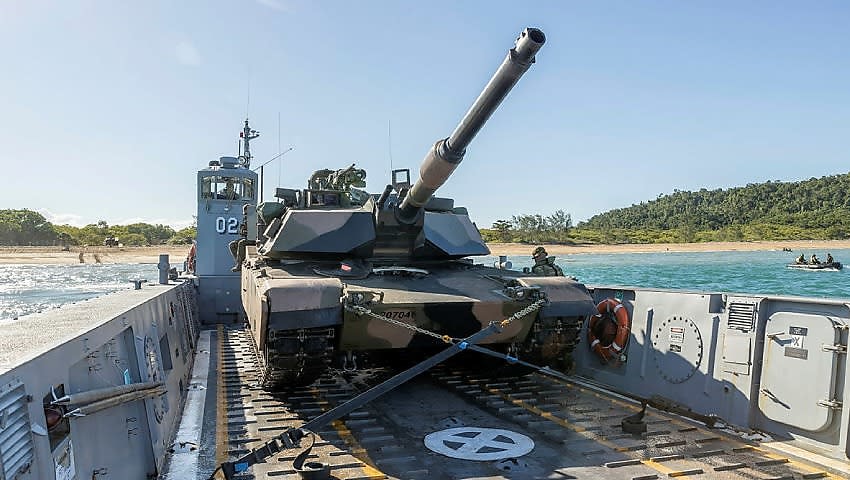Will surface ships and armoured vehicles still play a critical role in the future battlespace?
To continue reading the rest of this article, please log in.
Create free account to get unlimited news articles and more!
Last month, the Commonwealth government gifted Ukraine 20 Thales-built Bushmaster protected mobility vehicles, including two ambulance variants, to support the country’s military campaign against the Russian invasion.
This was in response to a request from President Volodymyr Zelenskyy during his remote address to a joint sitting of Federal Parliament on 31 March.
The request could be seen as a reflection on the continued importance of armoured capability in the modern battlespace despite Russia’s own difficulties deploying heavy combat vehicles to the frontline.
Continued investment in next-generation surface vessels from modern defence forces, including the Australian Defence Force, also suggests the capability would form a key part of future force postures.
However, Andrew Davies, senior fellow at ASPI and former director of ASPI’s defence and strategy program, says both armoured vehicles and surface ships are in “the decline phase of their history”.
Pointing to historical examples of the “significantly reduced utility” of military capabilities, Davies concedes that armoured vehicle and surface combatants could still be useful in future warfighting scenarios, albeit in a limited capacity.
“Strictly speaking, no capability is ever entirely useless. There are probably still occasional circumstances in which the crossbow, horse cavalry charge or 16-inch guns of a battleship would still be effective weapons,” he writes.
“But those instances are so rare that no one sees the benefit of including them in modern force structures.”
He observes that militaries are conservative by nature, stating they tend to preserve capabilities that have deployed successfully in the past.
“So, weapons systems usually don’t disappear overnight; instead, it happens gradually over time,” Davies writes.
“There were several horse cavalry charges during World War II (and many of them were successful), and the last two Iowa Class battleships (the Missouri and the Wisconsin) took part in shore bombardments during the 1991 Gulf War.
“There are just more reliable or cost-effective ways to produce those effects these days.”
To support his thesis on the decline of surface ships and armoured vehicles, Davies flags rapid changes in warfighting trends.
He begins by pointing to the “phenomenal increase” in the swift and precise delivery of lethal force.
“It’s hard to exaggerate how rapid that increase has been — it is well beyond exponential,” Davies continues.
“The result has been a steady, though less mathematically dramatic, decline in the density of combatants on the battlefield, as militaries take a small-target approach through dispersion.”
He goes on to claim tanks and ships are “inherently lumpy”, and would increasingly become a liability as offensive threats evolve.
“Up to now they’ve managed to get by with more or less acceptable loss rates because the offensive weapons they face have generally been just a little too slow in arriving or a little too inaccurate to completely overwhelm the defences,” he writes.
“But it’s also clear that the speed and accuracy of weapons systems are still improving, with the added complication of the ubiquity of drones of various shapes, sizes and lethality.”
Davies claims while it is possible to develop new defensive systems, they “tend to be more expensive than the weapons they are defending against” and can “drive up the unit cost of the platforms they protect” without delivering additional offensive value.
“All of the elements of the calculus weigh against expensive lumpiness,” he adds.
“Like the weapons systems of the past that are now universally agreed to be obsolete, today’s major systems will one day be anachronisms.”
Davies concludes that surface ships and armoured vehicles could become “anachronisms” as early as the 2030s.
“I’m tempted to say that they will not disappear with a bang but will gradually fade away — but there will actually be quite a few bangs in the process,” he writes.
Get involved with the discussion and let us know your thoughts on Australia’s future role and position in the Indo-Pacific region and what you would like to see from Australia's political leaders in terms of partisan and bipartisan agenda setting in the comments section below, or get in touch with

 Login
Login







